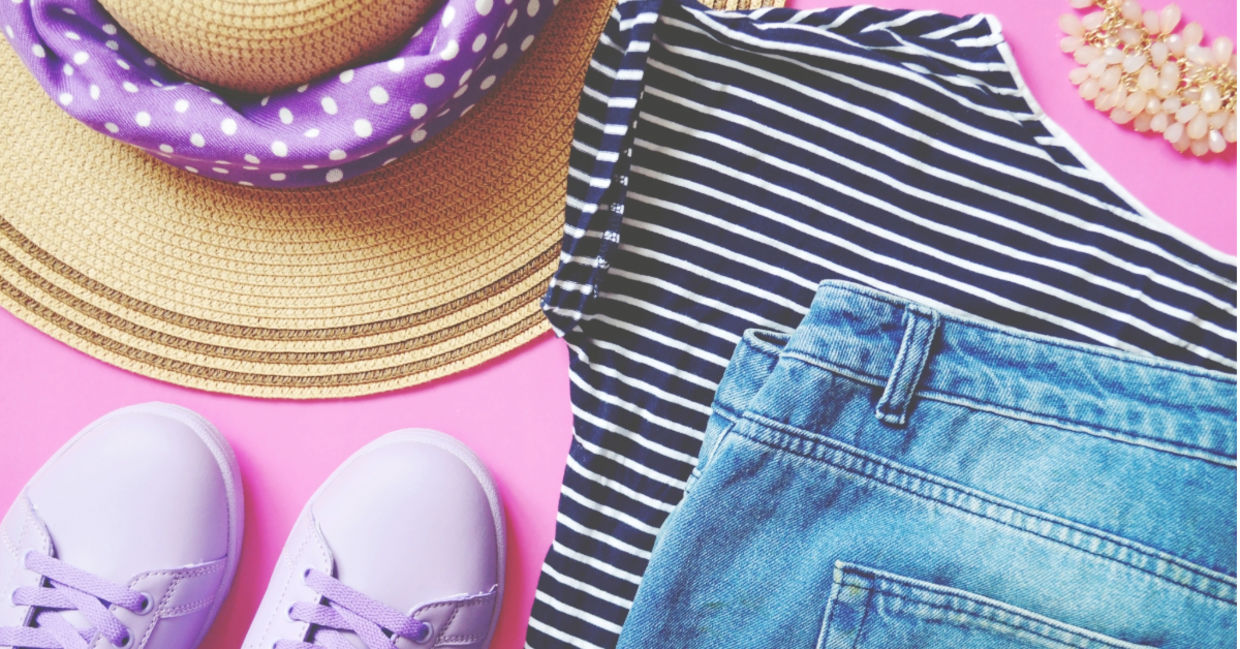
(learesphoto / Shutterstock.com)
Taking proper care of your clothing helps your favorite jeans and sweaters stay wearable longer. While nothing lasts forever, you don’t have to be part of the throw-away fast fashion culture.
North Americans actually send over 10 million tons of clothing to landfills every year according to the Canadian organization Waste Reduction Week. The astonishing fact is that 95 percent of these textiles could have been repaired, reused, or recycled.
From purchasing to washing to storing, here are seven tips to help you join the slow fashion movement. Keeping clothing longer is good for you and for the planet too.
Buy Quality Clothing
Always buy good quality clothing. While you are in the store, The Guardian suggests that you really scrutinize the garment before you purchase it. First turn it inside out and check the seams. If anything is loose, don’t buy it.
You should also hold the garment up to light. If you can see through it – and it isn’t silk – put it back on the shelf. The thicker the fabric, the longer it will wear. Cotton and wool will last longer than synthetics.

(stockfour / Shutterstock.com)
Wash Your Clothing Less Frequently
Washing is really tough on clothing according to The Good Tee blog. That doesn’t mean that you walk around with smelly clothing but people tend to wash after one wearing and that actually breaks down the item. Blue jeans can be worn several times before washing. Just spot clean clothing that isn’t really dirty, steam clean in the shower, and hand wash delicate items.

(BonNontawat / Shutterstock.com)
Washing Tips
Washing clothes in cold water helps to preserve the apparel and cuts back on energy use. Turning your clothing inside out before laundering also cuts back on wear and tear according to Eluxe Magazine. This will reduce friction in the washing machine and will protect embroidery or other decorative items on the outfits.
Another tip is to close clasps and zippers before laundering. You can put bras into a net to help protect other clothing in the load. Do not wash in hot water, it won’t clean your clothing any better than cold and it will cause shrinkage and color fading. And always use a natural laundry detergent.

(Krakenimages.com / Shutterstock.com)
Let Clothing Air Dry
Dryers can damage your clothing by causing shrinkage and fabric break-down from the tumbling. In some places you can dry your clothing outdoors for most of the year but in northern locations, you may only be able to in warm weather. You can use an indoor drying rack for delicate items like intimate wear the rest of the year, according to The Good Tee.

(Nils Z / Shutterstock.com)
Proper Storage
Store your clothing according to the manufacturing labels. Sweaters should be folded and kept on a shelf in your closet. That will help preserve their shape and lessen the strain on the fabric according to Eluxe. Avoid over-stuffing your closet to keep clothing fresh and wrinkle free. Make sure that your clothes are clean and dry before putting them away to avoid moths and mildew.

(Svetlana Rey / Shutterstock.com)
Repair Clothing
Clothing needs to be maintained just like your car, The Guardian reported. Repair small things yourself, like miner rips and sewing on buttons. Sew by hand if you don’t have a machine. If you don’t know how to sew, you can watch YouTube tutorials. Bring major repairs to a professional.

(itakdalee / Shutterstock.com)
Don’t Throw Away, Upcycle Instead
While styles and seasons change, don’t throw clothing away, upcycle it instead suggests Eluxe. If the knees of your jeans are wearing, cut them down into shorts. You can hem a long dress to make it shorter or add pockets to a skirt to make it more practical. You can recycle yarn from an old sweater to make a hat and scarf. Just use your imagination.

(JasminkaM / Shutterstock.com)







